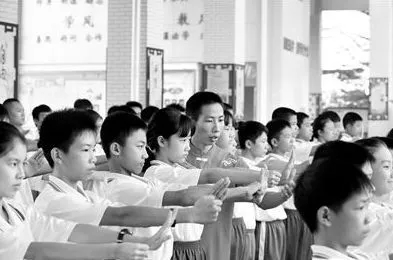Hebei Youth Daily News Ruihu is making a new year, and the new year is not a big one. Baoding's long history and profound cultural accumulation have bred a splendid intangible cultural heritage. During this year's Spring Festival, in order to enrich people's spiritual and cultural life, Hebei Youth Daily specially launched the "Baoding Intangible Cultural Heritage Annual Flavor" column to create a strong New Year atmosphere and take you to experience the New Year's flavor of Baoding Intangible Cultural Heritage.
Baoding Yi County is a "thousand-year-old county" with profound cultural heritage. The long historical inheritance has left us a large number of valuable intangible cultural heritage. Among the 154 items of the "List of Representative Projects of the Sixth Batch of Municipal Intangible Cultural Heritage in Baoding", there are 25 traditional sports, amusements and acrobatics, and Hongquan in Dongliuzhao Village, Yixian County, is one of them.
Hong Quan historical origins
Hong Quan is one of the oldest martial arts in the mainland, occupies an important position in the history of Chinese martial arts, there are big Hong Fist, Small Hong Fist and Old Hong Fist, all those who practice boxing, equipment, short blows, and technical blows, all start from Hong Fist, so it is known that "Hong Fist is the source of all arts".
In the Qing Dynasty, Hong Quan was famous all over the world for the innovative development of Hong Xiguan, Huang Feihong and others. During the Xianfeng period, the Shandong boxer Duan Yixing collected disciples in Zhuozhou and Gaobeidian areas and taught Hong quan. His disciples Wang Desheng, Dong Kejian and others carried forward Hong Quan even more. Dong Kejian's disciple Zhang Mao was the biological father of Wang Sen, a well-known boxer in Yi County. Wang Sen first practiced Hongquan with his biological father Zhang Mao, and then continued to practice with the boxer Li Haicheng, not only inheriting the Hongquan boxing technique well, but also teaching Hongquan in Yongyang, Yixian Qiaotou Township, Liujing Township, Baima Township and other places in Laishui County for many years, and cultivating many high-ranking disciples.

(Intangible Cultural Heritage Project Enters the Campus, Teachers and Students Learn to Fight Hong Fist)
Dongliu summons the village Hong Fist
Since its development, Dongliuzhao Village Hongquan has combined the pictograms of dragons, tigers, lions, leopards, snakes, cranes, elephants, horses, monkeys, and biaos with martial arts techniques. There are many and miscellaneous boxing routines, such as single-shaped boxing, such as dragon fist, tiger fist, etc.; there are also mixed-shaped boxing techniques, such as tiger crane double fist, five-shaped fist, ten-shaped fist, etc. There are many tricks, and short fists are the most important, more than a hundred hands, the momentum is fierce, the strength is full, the practicality is strong, especially suitable for the defense of the health body.
The main equipment are: five tiger sticks, monkey sticks, double-headed guns, sun and moon shovels, spring and autumn knives, double knives, double hammers and so on. The practice routines include "a tiger and a flock of sheep", a large knife and a gun, a stick, and a three-person fight.
Dongliu Zhaocun Hongquan not only strengthens his body and tempers his will, but also respects martial virtue, can defend himself in close proximity, and can kill the enemy on the battlefield.
Intangible cultural heritage is a precious and valuable cultural resource and an important part of Chinese civilization. Protecting and making good use of intangible cultural heritage is of great significance to carrying forward china's excellent traditional culture and building a socialist core value system.